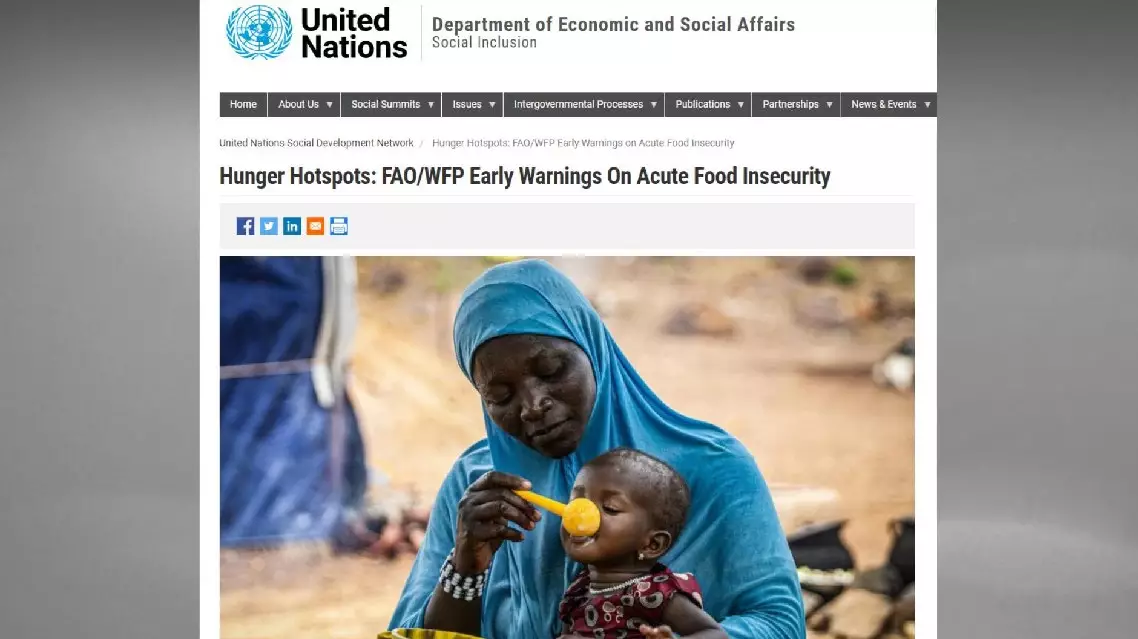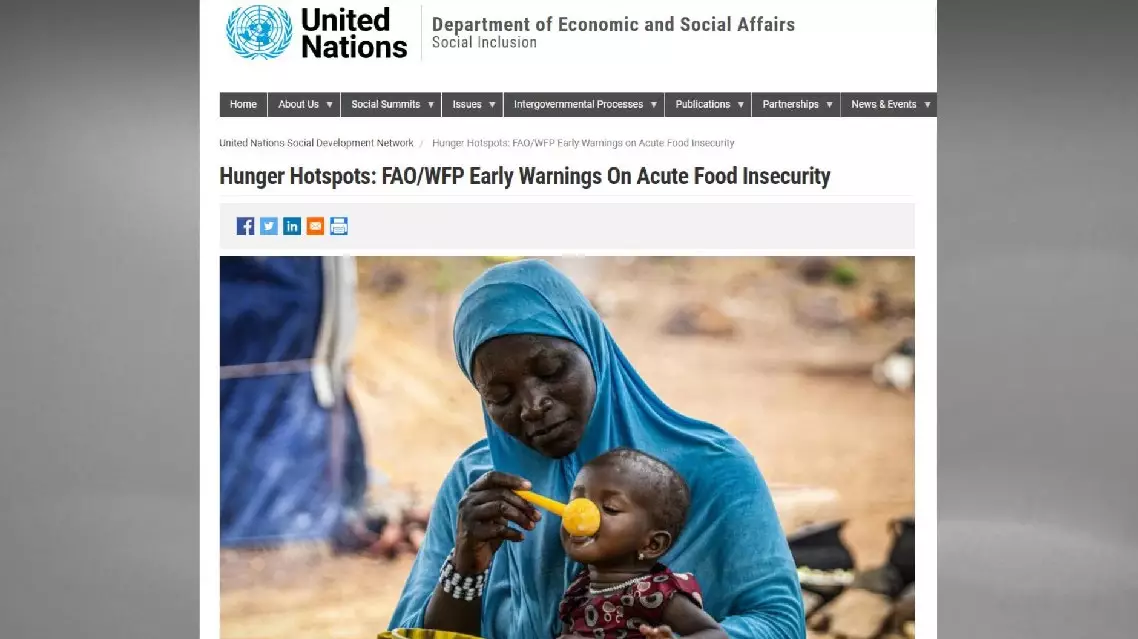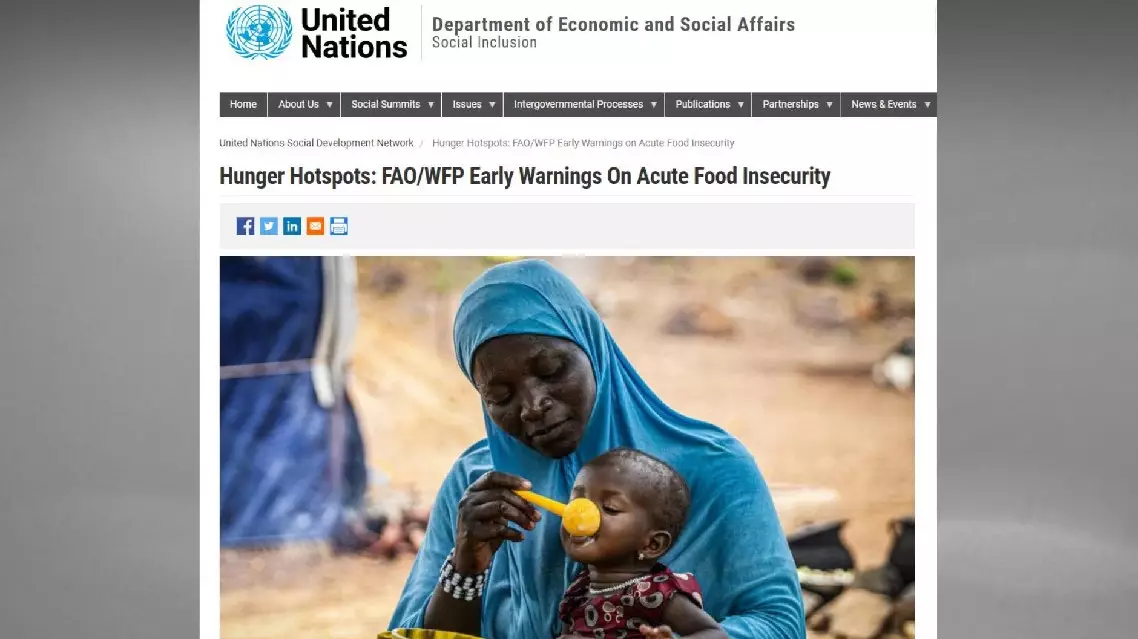Acute food insecurity is expected to worsen in 22 countries in the following six months due to multiple escalating factors, warned two United Nations (UN) agencies in a report released Thursday.
The report, titled "Hunger Hotspots - FAO/WFP Early Warnings on Acute Food Insecurity," assesses 16 hunger hotspots around the world, analyzing their outlook for the period from November 2024 to May 2025.
Sudan, Palestine, South Sudan, Haiti and Mali are the countries considered to be "at the highest concern level" and in need of "the most urgent attention," the Food And Agriculture Organization (FAO) and the World Food Programme (WFP) warned in a joint statement.
Without immediate humanitarian action to address severe access constraints and resolve ongoing conflicts, the aforementioned countries face an even greater threat of famine.
Meanwhile, Chad, Lebanon, Myanmar, Mozambique, Nigeria, Syria, and Yemen are considered countries of "very high concern", while the remaining 10 countries and territories on the list are seen as hunger hotspots, including Kenya, Lesotho, Namibia, the Niger, Burkina Faso, Ethiopia, and Zimbabwe.
The alarming outlook is driven by at least three factors: conflict, climate, and economic instability and disparities. Alone or combined, these factors are threatening "to deepen already life-threatening conditions."
"And in Sudan, for instance, famine has already been declared in Zamzam, a camp in northern Darfur. And we also see the risk of famine in Palestine, particularly the Gaza Strip. And the drivers are largely linked to the conflict as well as violence that has resulted in displacement of populations. And when we look at the impact of displacement, but also the impact on food systems, we see a situation where populations are no longer able to subsist from their regular livelihoods," said Maxwell Sibhensana, deputy director of the Office of Emergencies and Resilience under the FAO.
In addition, the effects of the La Nina weather pattern, anticipated to impact global climates from November 2024 through March 2025, may also pose a threat to agricultural production in multiple hunger hotspots.
The report also warned that La Nina is likely to cause devastating floods in countries such as Nigeria and South Sudan, while potentially contributing to dry conditions in Somalia, Kenya, and Ethiopia.
These extreme weather events threaten already fragile food systems, putting millions at risk of hunger, said the report.

UN warns of famine in 22 countries

UN warns of famine in 22 countries

UN warns of famine in 22 countries









